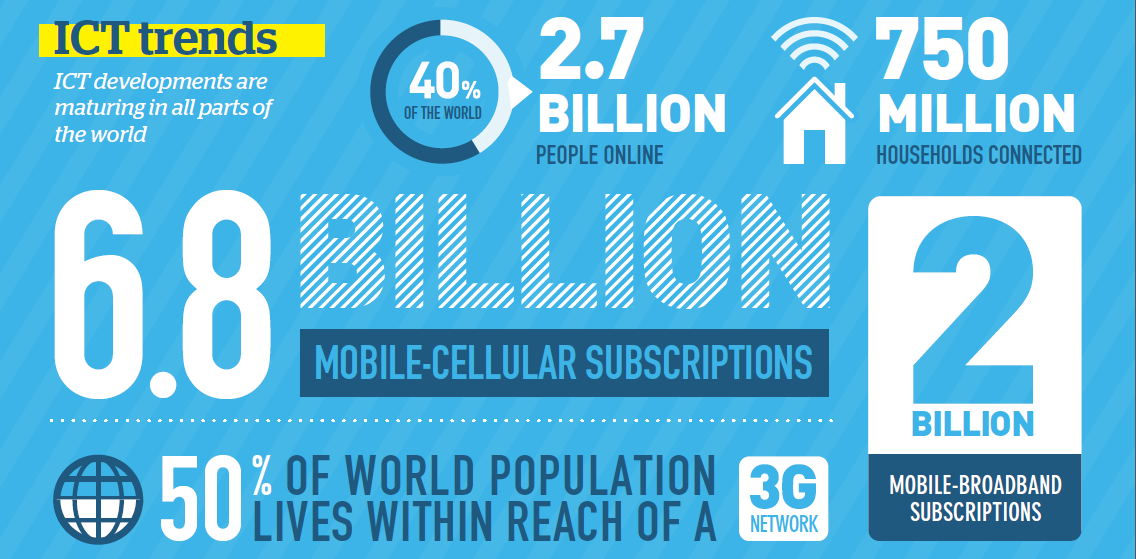Finland of digital second-generation (2G) mobile services in 1991, then third-generation (3G) in Japan in 2001.
ITU StatisticsThe collection and dissemination of information on the growth of information and communication technologies (ICT) has been part of ITU’s mission from the start. It now collects
statistics covering 200 economies and over 100 indicators. |
ITU agreed radio-frequency spectrum allocations for 2G mobile telephony at the World Radiocommunication Conference in 1993. But as technologies progressed, various mobile phone systems existed in a fragmented market. After more than ten years of work under the leadership of ITU, an historic decision was taken at the conference held in 2000: the unanimous approval of technical specifications for third-generation systems under the name IMT-2000. For the first time, full interoperability of mobile systems could be achieved, and the foundation was laid for new, high-speed wireless devices capable of handling voice, data and connection to the Internet. In 2012, the ITU Radiocommunication Assembly agreed specifications for IMT-Advanced – a global platform on which to build the next generation of interactive mobile services.
According to ITU figures, there were 6.8 billion mobile phone subscriptions in 2013 – almost the same number as the world population. And more and more, people are choosing smartphones and other mobile devices that link them to the Internet.
 Snapshot of the Measuring the Information Society ICT Development Index (IDI) infographic. Click to expand. (Source: ITU) Snapshot of the Measuring the Information Society ICT Development Index (IDI) infographic. Click to expand. (Source: ITU) |
